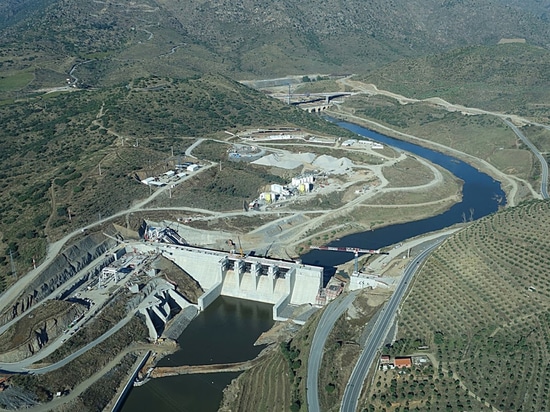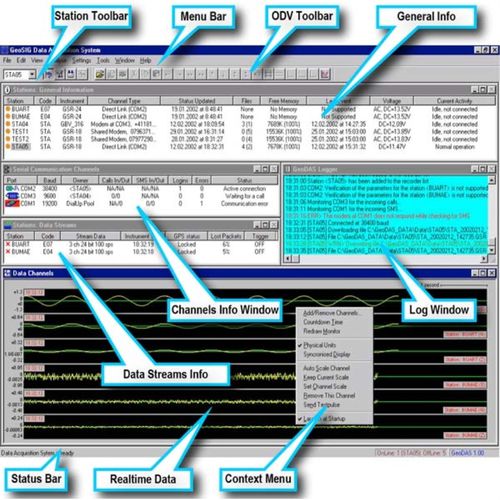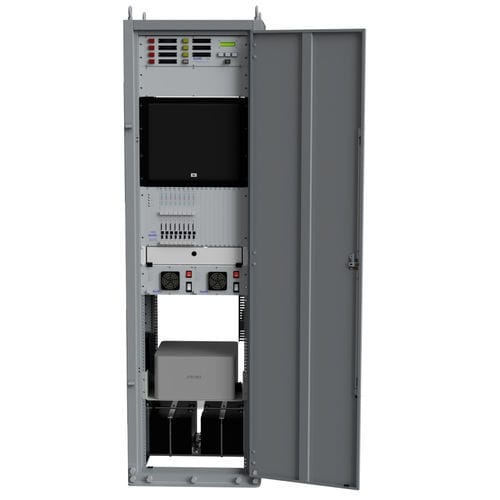
#Product Trends
Structural Monitoring Case Study: Unit 4 reactor sarcophagus Chernobyl, Ukraine
In cooperation with GeoSIG partner: NOVARKA
Background
The Unit 4 reactor explosion at Chernobyl near Pripyat, Ukraine, happened on 26 April 1986, making news worldwide. A sarcophagus was built just after the accident with the aim of containing radioactive materials and protecting the structure, and an exclusion zone was created around the area to restrict access.
In 2010, a Ukrainian law came into effect stipulating that the nuclear power plant site is to be cleaned by 2065. As a first and major step toward that goal, NOVARKA was contracted to design and build the New Safe Confinement Structure which, once completed, would enable deconstruction of the damaged reactor by others to commence. NOVARKA is a joint venture by two French companies: VINCI Construction Grands Projets and Bouygues Travaux Publics. The new structure will further contain radioactive materials and protect the existing shelter from weather damage, and ultimately, it will allow work to begin on deconstruction of Unit 4 at some point in the future. The colossal structure (measuring 108 metres in height and with a frame weighing 23,000 tonnes) has a projected lifespan of 100 years.
Challenge
The working environment at the site is indeed a challenge due to radiation, but that is not the only concern. Ukraine does experience seismic activity, and the sarcophagus over the reactor has weathered over the years and is in danger of instability. NOVARKA needed a system to monitor strong ground motion. This is further exacerbated by the icy conditions.
Solution
Due to the scale and scope of the project, the best solution for monitoring strong ground motion was agreed to be a specially customised SMS system with special GeoDAS-NPP version, along with 2 x CR-6plus units with a combined 30 channels, 10 x AC-23-NPP (accelerometers) with special stainless steel housing (four of which were also externally shielded with a specially-constructed lead armour so that they could be placed inside the containment area), and cables and accessories.
The sensors are installed on selected structural members of the confinement shelter arch and its foundations, as well as at a freefield location for reference. Monitoring is performed locally (on site), but there is also the possibility to interact remotely by an authenticated user. The provided system has functions like: detecting seismic events, monitoring the response of the structure to seismic event, detecting abnormal vibration of the Main Crane System bridges during operation, and providing an alarm in case of exceedance of thresholds.
The installed solution offers reliable and continuous monitoring, providing real-time data that can be recorded continuously as well as providing data based on event detection. With its enhanced capabilities, the system offers a comprehensive range of statistical data such as mean, max, min, and peak values, as well as many other useful data as may be required by the client. GeoDAS, a proven data acquisition and evaluation package developed by GeoSIG, complements CR-6plus providing highly flexible user-friendly capabilities, and graphical, analytical and reporting tools with configurable automation.
Another Solution using GeoSIG instruments, demonstrating that quality and reliability can also be cost effective.








